The main detail of the shawl is the border, which will complete the canvas both from the aesthetic and technical side. Do not neglect the choice of a pattern with a description of knitting such things with knitting needles, because inappropriate options contribute to a strong distortion of the appearance, and the optimal ones will decorate the product.
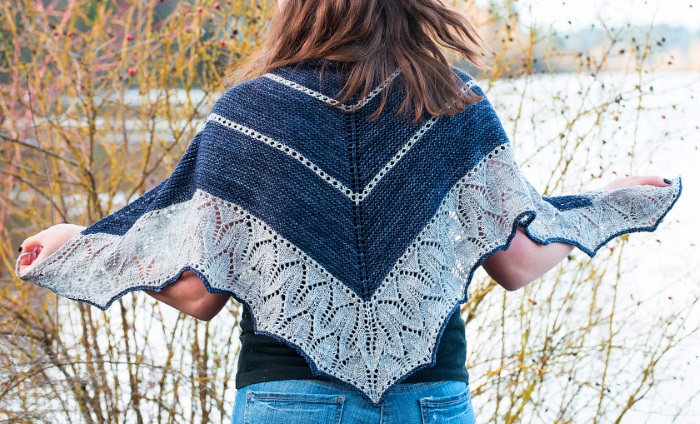
Necessary tools and materials
Patterns describing any version of a shawl border require the preparation of knitting needles of the appropriate size, as well as thread material that will match the main fabric in composition and shade. Additionally, you should use scissors with a ruler or measuring tape.
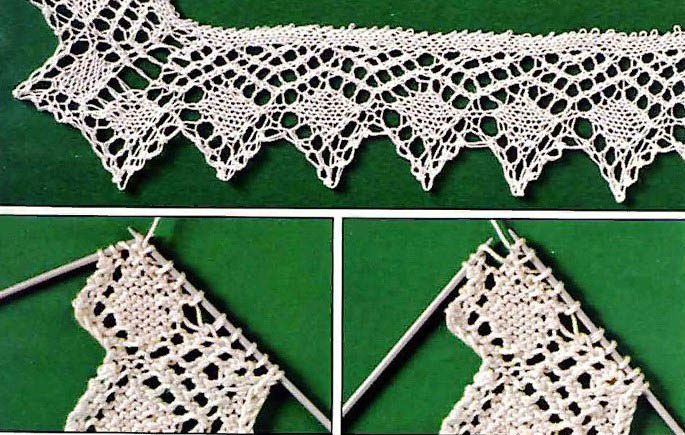
Often, there is no need to specially select the material and thread thickness for edging the outline of the product. To create this detail, you need to take the material that was previously used to design the main fabric. When using thick yarn, it is not necessary to give the edging an openwork look.
In this case, the border can be made in the form of a dense pattern, for example, in the form of teeth.
If the shawl is intended for a cold period of time, it is advisable to use a material with a medium density. Acrylic or soft wool are suitable for these purposes.
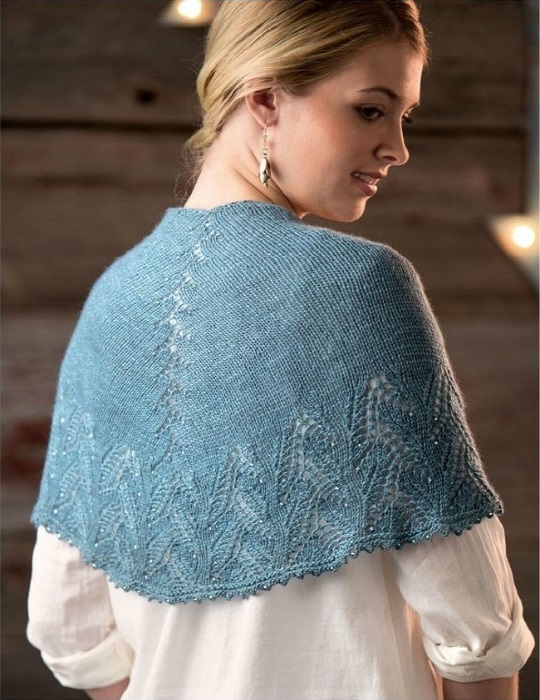
Recommendations for choosing a knitting tool:
| Parameter | Needle size |
| To obtain a dense product | In this case, the size of the knitting needles should be 0.25-0.5 mm smaller than indicated on the packaging of the thread material. |
| So that the item is delicate, soft and airy | For knitting light clothing, it is recommended to use tools whose size should be 0.25-0.5 mm larger than stated on the yarn packaging. |
| If there is no information on the yarn packaging regarding the required knitting needle size | In this case, it is necessary to initially twist the thread material 2 times. However, the twist should not be very tight. The resulting thickness of the yarn will correspond to the required size of the knitting tool. In this regard, the knitting needles should be 2 times thicker than the yarn. |
Schemes with description of works for beginners
The border for a shawl knitted with knitting needles (the diagram and description are simple, so they are suitable for beginners) can have different widths, for example, in the form of an openwork wide, lush strip or a narrow border.
The edging can also be done in the form of:
- zigzag;
- braids;
- leaves;
- diamond-shaped, triangular teeth;
- grids;
- flowers.
The edging can be knitted separately in the form of a ribbon, and then sewn to the fabric along the perimeter. However, this element is often knitted as a whole during the edging of the main elements of clothing.
Openwork
The border for a shawl with knitting needles (the diagram and description will allow you to design both a dense and an airy thing) in the form of openwork can be made from the main material or it is acceptable to use yarn of a contrasting tone. Initially, you need to dial 26 stitches and knit 156 lines. As a result, you should get 13 rapports of the ornament vertically.
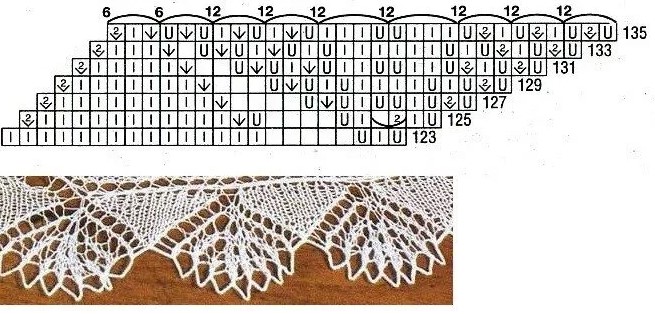
Step-by-step description of the scheme:
- 1 row consists of 24 stitches. To do this, knit 3 front elements and make a yarn over. Form 2 front stitches together, then make 5 front and 2 front elements together, 1 yarn over and 2 front loops together. Additionally, knit 9 front stitches, a yarn over, 2 front loops together and 1 front element.
- Row 2 contains 23 stitches. Slip 1 element, knit 2 front loops and yarn over. Make 2 front stitches together, then make 1 front and 2 front elements together. Make 1 yarn over and 2 front loops together (repeat twice). Make 2 front stitches, yarn over, 2 front loops together, 3 front and 2 front elements together. Yarn over again and knit 3 front stitches.
- Row 3 has 24 loops. To do this, make a yarn over, 4 knit loops, yarn over, 2 knit stitches together, 1 yarn over and 2 knit elements together, yarn over again, 11 knit loops, 1 yarn over, 2 knit stitches together and 1 knit element.
- In the 4th row, knit 24 loops. To do this, remove 1 element, knit 2 front stitches and make a yarn over. Make 2 front loops together and 3 front stitches. Yarn over and knit together 2 front loops (repeat twice). Then make 3 front stitches, yarn over and remove 1 element. Knit 2 front stitches together and pull the resulting loop through the removed one. At the end, make a yarn over and 6 front elements.
- Row 5 consists of a yarn over, 1 knit and 2 together knit stitches, 2 yarn overs, 18 knit stitches, a yarn over, 2 together knit stitches and 1 knit stitch. There should be 26 stitches in total.
- Row 6 consists of 1 slipped stitch, 2 knit stitches, yarn over, 2 knit stitches together and 4 knit stitches. Then yarn over and knit 2 knit stitches together (repeat twice). Make 8 knit stitches and knit 1 knit and purl element from the double yarn over. Make 3 knit stitches. There should be 26 stitches in total.
- Row 7 consists of 1 knit, 2 together knit elements, 2 yarn overs, 2 knit loops together, 2 yarn overs, 2 knit together and 16 knit stitches, yarn overs, 2 together knit and 1 knit stitch. There should be 27 elements.
- In the 8th row, knit 27 loops. To do this, remove 1 stitch, knit 2 front loops, make a yarn over, then 2 together front and 5 front elements. Make 1 yarn over and make 2 front elements together (repeat 2 times). Make 6 front stitches and knit from the double yarn over 1 front and purl loop. At the end, make 2 front stitches.
- Row 9 consists of 2 knit together, 1 knit, 2 knit together elements, 2 yarn overs, 2 knit together and 3 knit stitches, yarn over, knit stitch, yarn over, 2 knit together and 11 knit elements. Perform 1 yarn over and knit 2 together knit stitches and 1 knit stitch. There should be 27 stitches.
- In row 10, to get 27 loops, initially remove 1 stitch and knit 2 front elements. Perform 1 yarn over, 2 front together, 3 front and 2 front together loops. Yarn over and knit 2 front elements together. Perform a yarn over and 3 front stitches together (repeat twice). After 1 yarn over, knit 2 front together and 2 front elements. From the double yarn over, make 1 front and purl stitch. Form 2 together front and 1 front loop.
- Row 11 consists of 2 knits together, 3 knits and 2 knits together stitches, yarn over, 5 knits, yarn over, 2 knits together and 10 knits, 1 yarn over, and 2 knits together and 1 knit. The result should be 26 stitches.
- In row 12, remove 1 element, knit 2 front loops and make 1 yarn over. Then knit together 2 front stitches and 2 front loops. Make 2 front elements together with 1 yarn over (repeat twice). Additionally, make 3 front loops, yarn over, 7 front loops, yarn over, 2 together front, 1 front and 2 together front stitches. There should be 26 loops in total.
- Repeat the pattern starting from row 1.
Zigzag
The border for a shawl with knitting needles (the diagram and description will allow you to create a beautiful product) can be made in the form of a zigzag. Knitting will be one-sided, while the number of stitches should be a multiple of 12. Additionally, you need to make 1 loop so that the ornament is symmetrical. First, you need to make 1 preparatory line consisting of facial elements.
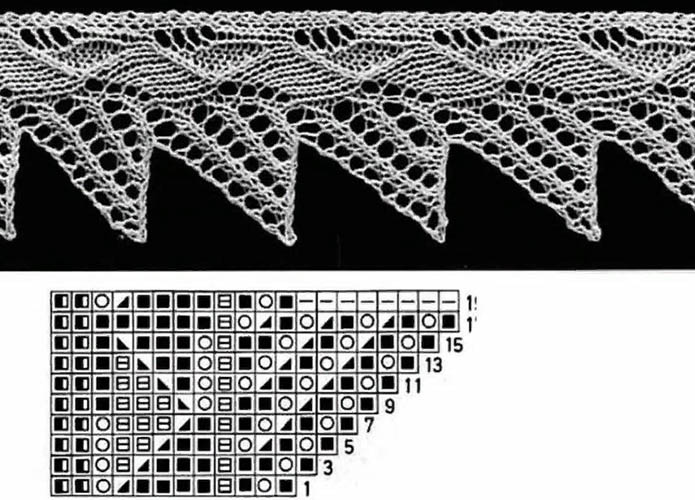
Step-by-step description of the work:
- Rows 1-4 should consist of knit stitches.
- Starting from row 6, and all even rows up to and including row 18, should consist of purl stitches.
- In the 5th row, knit 2 together front loops behind the back wall and 4 front elements. Perform 1 yarn over, knit 1 front stitch and make another yarn over, then make 4 front loops, 3 front loops together behind the back wall and 4 front elements (repeat with alternation to the end of the row). At the end, make a yarn over and also knit 4 front loops and 2 together front loops behind the front wall.
- In the 7th row, make 2 together knit stitches behind the back wall and 3 knit stitches with a yarn over. Then knit 2 together knit stitches behind the front wall, make a yarn over, 2 knit stitches, yarn over, 3 knit stitches, 3 together knit stitches behind the back wall, 3 knit stitches and a yarn over (alternating, repeat to the end of the row). Knit 2 knit stitches together behind the front wall, make a yarn over, 1 knit stitch, yarn over, 3 knit stitches and 2 knit stitches together behind the front wall.
- In the 9th row, make 2 together knit stitches behind the back wall and 2 knit stitches, yarn over and again 2 knit stitches together behind the front wall. Make a yarn over, 1 knit stitch, yarn over, 2 knit stitches together behind the back wall, yarn over, 2 knit stitches, 3 together knit stitches behind the back wall, 2 knit stitches and yarn over with 2 knit stitches together behind the front wall (repeat alternating to the end of the row). Then make a yarn over, knit stitch, yarn over, 2 together knit stitches behind the back wall, yarn over and also 2 knit stitches and 2 together knit stitches behind the front wall.
- In the 11th row, knit 2 together knit stitches through the back wall, 1 knit stitch, yarn over, 2 together knit stitches through the front wall and yarn over again. Make 3 knit stitches, yarn over, 2 knit stitches together through the back wall, yarn over, 1 knit stitch, 3 knit stitches together through the back wall, 1 knit stitch, yarn over, and also 2 together knit stitches through the front wall with yarn over (alternate until the end of the row). At the end, knit 3 knit stitches and yarn over, then make 2 together stitches through the back wall, yarn over, 1 knit stitch and 2 knit stitches together through the front wall.
- Row 13 consists of 2 knit stitches together behind the back wall, yarn over, 2 knit stitches together behind the front wall, yarn over and 1 knit stitch. Then, alternating to the end of the row, knit 4 knit stitches, 2 knit stitches together behind the back wall, 3 knit stitches together behind the back wall, 2 knit stitches together behind the front wall and 1 knit stitch (do 1 yarn over between the stitches). At the end, make 4 knit stitches, yarn over, 2 knit stitches together behind the back wall, yarn over and again 2 knit stitches together behind the front wall.
- Row 15 consists of 2 knit stitches together behind the back wall, knit stitch and 2 knit stitches (do a yarn over between the stitches). Repeat alternating to the end of the row 5 knit stitches, yarn over, knit stitch, 3 knit stitches together behind the back wall, knit stitch, yarn over and 2 knit stitches. Then knit 5 knit stitches, do a yarn over and make 1 knit stitch and 2 knit stitches together behind the front wall.
- In the 17th row, initially knit 2 front loops together behind the back wall, make a yarn over and make 3 front stitches. Then make 6 front elements, a yarn over, 6 front stitches, a yarn over, 3 front loops together behind the back wall, a yarn over and again 3 front loops (repeat with alternation). At the end, knit 6 front stitches, 2 front elements together behind the front wall.
- To repeat the pattern, start with line 1.
Rhombus
The knitted shawl border (the diagram and description will tell you how to properly knit the edging of the clothes) can be made in the form of diamonds with one-sided knitting. When casting on loops, the number should be 22 pcs.

Step by step description:
- 1 row consists of 2 knit stitches, yarn over, knit, 5 purl, 2 knit stitches together behind the front wall, yarn over, 2 knit stitches, yarn over, 2 knit stitches together behind the back wall, 4 knit stitches, yarn over, and also 2 knit stitches together behind the back wall and 2 knit stitches.
- 2 and all other even rows should consist of a yarn over and a purl stitch.
- In the 3rd row, make 1 front stitch, 2 front stitches together behind the back wall, yarn over, 2 front stitches together behind the back wall, 2 purl stitches, 2 front loops together behind the front wall, yarn over, 1 front stitch, 2 front stitches together behind the front wall, yarn over, 1 purl stitch, yarn over, 2 front stitches together behind the back wall, 3 front loops, yarn over, 2 front stitches together behind the back wall and 2 front stitches.
- Row 5 consists of 1 knit, 2 knit stitches together behind the back wall, yarn over, 2 knit stitches together behind the back wall, purl, 2 knit stitches together behind the front wall, yarn over, knit, 2 knit stitches together behind the front wall, yarn over, 3 purl stitches, yarn over, 2 knit stitches together behind the back wall, 2 knit stitches, yarn over, 2 knit stitches together behind the back wall and 2 knit stitches.
- Row 7 consists of a knit stitch, 2 knit stitches through the back wall, yarn over, 3 knit stitches together through the back wall, yarn over, knit stitch, 2 knit stitches together through the front wall, yarn over, 5 purl stitches, yarn over, 2 knit stitches together through the back wall, knit stitches, yarn over, as well as 2 knit stitches together through the back wall and 2 knit stitches.
- The sequence of stitches in the 9th row is knit stitch, 2 knit stitches together behind the back wall, yarn over, 2 knit stitches together behind the back wall, knit stitches, yarn over, 2 knit stitches together behind the back wall, 5 purl stitches, 2 knit stitches together behind the front wall, yarn over, 1 knit stitch, yarn over, 2 knit stitches together behind the back wall and 2 knit stitches.
- The stitch sequence in row 11 is 2 knit stitches, yarn over, purl stitch, yarn over, 2 knit stitches together behind back wall, knit stitch, yarn over, 2 knit stitches together behind back wall, 3 purl stitches, 2 knit stitches together behind front wall, yarn over, 2 knit stitches, yarn over, 2 knit stitches together behind back wall and 2 knit stitches.
- The sequence of loops in row 13 is 2 knit stitches, yarn over, 3 purl stitches, yarn over, 2 knit stitches together behind the back wall, knit stitch, yarn over, 2 knit stitches together behind the back wall, purl stitch and 2 knit stitches together behind the front wall, yarn over, 3 knit stitches, yarn over, 2 knit stitches together behind the back wall and 2 knit stitches.
- Row 15 consists of 2 knit stitches, yarn over, 5 purl stitches, yarn over, 2 knit stitches together behind back wall, knit stitches, yarn over, 3 knit stitches together behind back wall, yarn over, 4 knit stitches, yarn over, 2 knit stitches together behind back wall and 2 knit stitches.
- To repeat the pattern, start with line 1.
Secrets for Beginners
Secrets for Beginners:
- When selecting thread material with a knitting tool, you need to immediately decide on the ornament that will go along the contour of the clothing. The selected pattern should consist of 1-2 rapports for the correct calculation of the required number of stitches so that you can correctly knit the fabric. Rapport is an element of the ornament that will be repeated several times along the entire width and length of the item.
- When calculating the required number of loops, it is necessary to add 1 edge stitch to the result from each edge of the line. At the beginning of each new line, these elements must be removed without knitting. At the end of each row, such stitches should be made with purl loops.
- To calculate the number of loops, it is recommended to measure the length of not only the fabric, but also the rapport. Then the size of the fabric should be divided by the size of the rapport. The result obtained should be multiplied by the number of stitches.
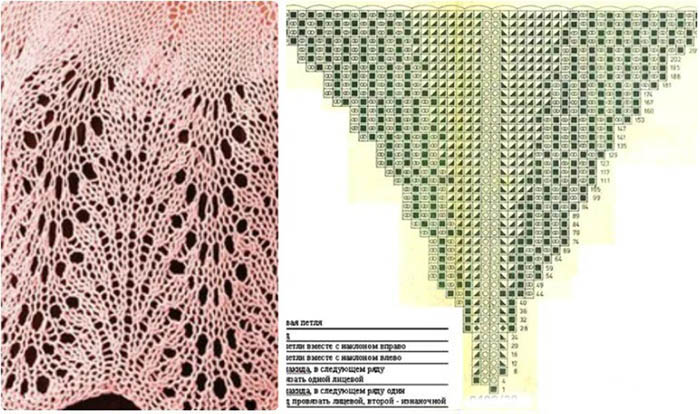
To decorate the edge of a knitted shawl, it is permissible to make a border instead of a standard strip or elastic band. Based on the diagrams with a description, this element can be made in length or width. In the first version, the border allows you to process the edging of the fabric along the perimeter, in the second, it can act as a continuation of a previously knitted product.
Video on knitting a simple border
